Discovering signs of foundation problems in your home can be worrying and stressful. Foundation settling or sinking and symptoms such as cracks in foundation walls or uneven floors are often indicators of an unstable foundation. One common culprit for these issues is clay soil, which is prevalent in Virginia and surrounding areas. As the ground shifts due to expanding clay, it can put immense pressure on your foundation, causing significant damage over time.
At LUX, we recommend push piers as an effective method to stabilize your foundation on clay soil, ensuring that you have a safe, stable home. This article will guide you through the installation process of push piers, offering clarity and assurance in addressing your home’s foundation concerns.
What is Clay Soil and Its Effect on Your Home’s Foundation?
Let’s first discuss what clay soil is.
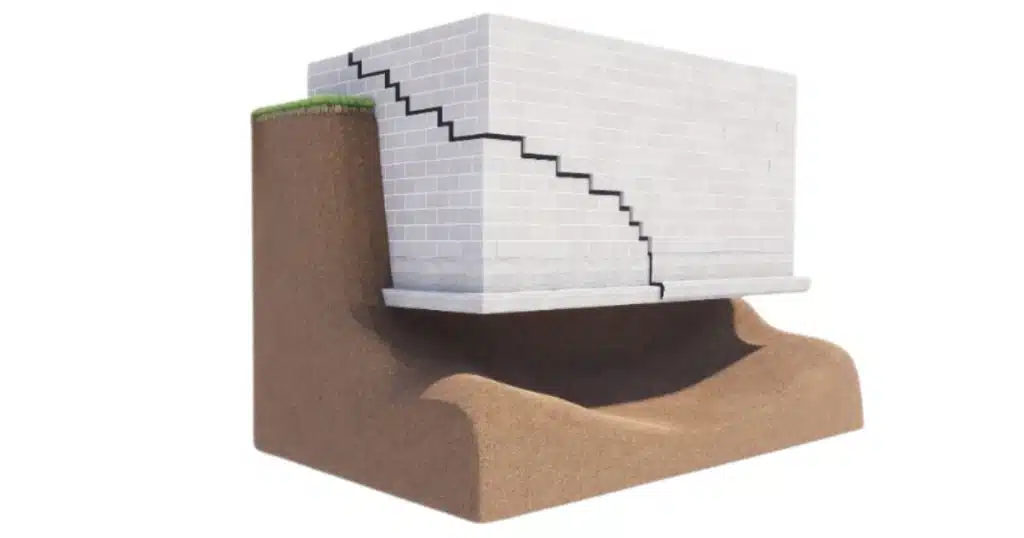
Clay soil – nature’s pottery wheel, is known for its expansive properties, meaning it swells when wet and shrinks when dry. This constant cycle of expansion and contraction can cause significant stress on your home’s foundation, leading to drywall cracks, bowing walls, and other signs of foundation problems.
To protect your home from this damage, it’s essential to stabilize your foundation with clay soil conditions using an effective solution such as push piers to manage and prevent damage on your home’s foundation effectively.
What are Push Piers and Their Effect on Your Home’s Foundation?
Resistance piers or Push piers are heavy-duty steel tubes that are driven deep into the ground beneath a home’s foundation in order to provide support and stabilization. These steel pipes are installed by attaching steel brackets to the foundation footing and connecting the piers to these brackets.

The piers are then hydraulically driven deep into the ground until they reach load-bearing soil strata or bedrock. The steel brackets connect piers to the foundation and transfer the weight of your home from the unstable clay soil to the solid ground beneath, stabilizing your home or structure’s foundation and preventing future issues.
When installed correctly, push piers provide a permanent solution to lift and strengthen your home’s structural integrity, effectively countering the movement, settlement, or instability present. It saves you from costly full removal and replacement repairs, all while providing peace of mind for long-term stability.
Steps in Installing Our Push Pier System for Your Foundation Stability
LUX utilizes the best-in-class GripTite Push Pier System, a permanent and warrantied solution for stabilizing foundations that have experienced damage due to settlement. Our installation process can be accomplished in six easy steps, ensuring your foundation is well-supported, and your home is safe and stable:

1. Site Assessment
Before installation can begin, a thorough assessment of the site is required to determine the appropriate placement and number of push piers needed to stabilize the foundation effectively.
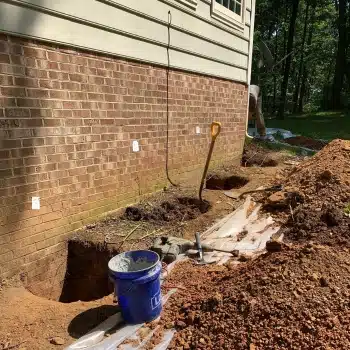
2. Preparing the Foundation Footing and Excavation
There are two ways to prepare the foundation footing, depending on whether the installation is inside or outside.
For inside installation, a part of your slab floor will be removed to reveal the footing. The removed slab will be reinstated following the installation. For outside installation, the soil surrounding your foundation needs excavation to uncover the footing.
If required, the footing will be shaped and cleaned up to ensure clean contact and connection are made with the footing at each designated location.
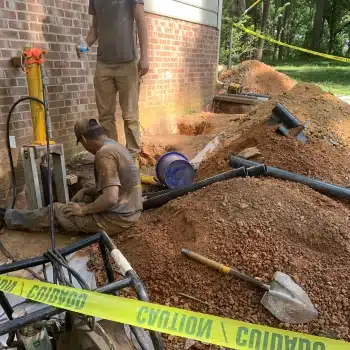
3. Securing the Foundation Bracket
If required, the footing will be shaped and cleaned up to ensure clean contact and connection are made with the footing at each designated location.
Steel brackets are fitted and fastened to the foundation footing at each designated pier point.
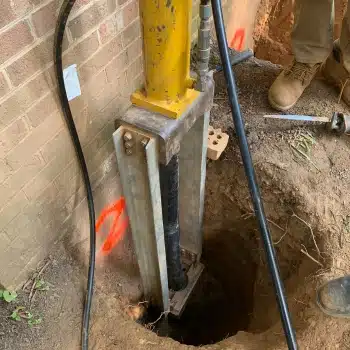
4. Installing the Steel Piers
Steel piers pilings are connected to the installed brackets and then hydraulically driven deep into the ground using a hydraulic press until they reach a stable bedrock or soil stratum suitable to support the weight of the home or structure. Your home or structure is carefully transferred from the unstable clay soil onto the installed piers.
These steel piers are the most durable element within our foundation pier system, effectively bearing the weight of your structure and transferring it to solid, load-bearing soil. Our foundation piers come in a corrosion-resistant coating or galvanized steel engineered to manage substantial loads and accommodate different foundation types. They are corrosion-resistant and designed as end-bearing piers, ensuring their capacity without relying on friction, thus ensuring long-lasting durability.
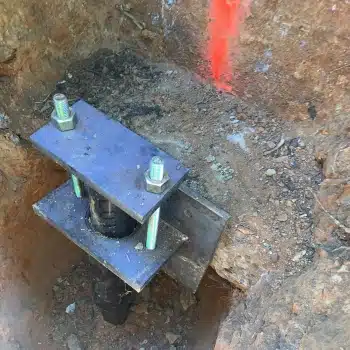
5. Lifting Your Home (Optional)
After completing the installation of all push piers, we will determine whether the foundation should remain stabilized in its current position or be lifted back to its original level. If the decision is to proceed with the lift, hydraulic lift cylinders will be utilized to carefully lift your home to its initial level, establishing a lasting solution for stabilizing the foundation.
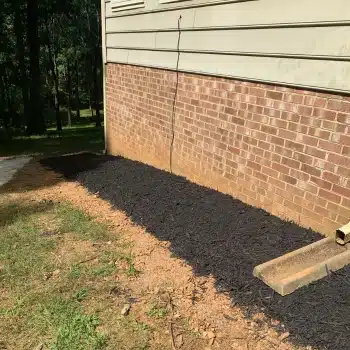
6. Finishing Touches
After stabilizing your home, the excavated areas are backfilled, or the slab is restored to ensure a clean and smooth finish. The home or structure can have the cosmetic items repaired/ restored and completed as required.
Benefits of Using LUX Push Pier System
There are several advantages to installing a push pier in your home because of the following features of the LUX push pier system:
✅Quick and Non-Invasive Installation
✅Cost-Effective Solution
✅Engineered to handle heavy loads and various foundation types
✅An end-bearing pier that does not depend on friction for capacity
✅Each pier undergoes load testing upon installation.
✅The piers are capable of reaching greater depths using a starter tube with a friction collar.
✅Built with high-strength steel pier sections and sleeved couplings, ensuring remarkable resistance to bending.
✅The below-grade installation remains hidden from sight, preserving the aesthetics of your property.
✅Long lifespan and exceptional corrosion resistance, designed to endure over 125 years even in moderate soils.
Contact Us for Professional Push Pier Installation for a Safe and Stable Home
Don’t let foundation problems on clay soil keep you stressed and anxious about your home’s stability. With our effective GripTite push pier system and experienced team, we’ll deliver peace of mind and a stable foundation that will stand the test of time. We offer free estimates.
If you want to schedule your free on-site estimate or want to have an online consultation, contact us at 540-508-8587 or fill out our online estimate request form today. We are serving areas in Northern Virginia, Shenandoah Valley, North Central Virginia, West Virginia, and surrounding areas.
FAQs
How much does the installation of push piers cost?
Installing push piers beneath your home’s foundation typically costs between $2000 and $2,500 per pier. The number of piers needed is contingent upon the size of your home and the degree of foundation damage. Generally, the average project cost is low end, $7,000-$25,000 high end is $25,000-$50,000.
It’s important to note that these figures serve as approximate estimates. Your total expenses could surpass or fall below these amounts and require individual evaluation and budget assessment.
Why is clay soil problematic for foundations?
Clay soil’s expansive nature causes foundation movement, leading to cracks and structural damage.
How do push piers help stabilize foundations on clay soil?
Push piers transfer a structure’s weight to stable soil layers, preventing further settlement.
How long does the installation of push piers take?
The duration varies based on the foundation’s condition but typically takes a few days for the installation process for a typical project. Large projects can take 1-3 weeks.
There is also a permitting, engineering, and inspection process, which is not accounted for as these vary in each county.
Are push piers a permanent solution for foundation problems?
Yes, when properly installed, push piers offer long-term stability and come with a 25-year to Lifetime warranty.
What causes foundation issues on clay soil?
The primary cause is the shrink-swell cycle of clay soil due to changes in moisture levels, which affects the foundation’s stability.
Are push piers suitable for all types of foundations?
No, push piers are versatile and can be used for most foundation types, providing effective stabilization. Each foundation must be carefully assessed for its effectiveness by licensed engineers and trained foundation professionals.
We typically recommend helical piers for new construction homes.
